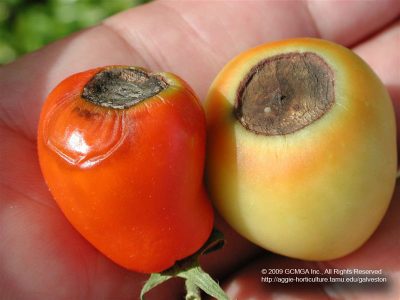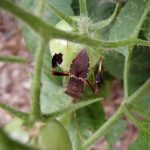Tomato disease

Plants are like puppies; choose the right one for your home, treat them well, train them well and you will be rewarded with a fruitful relationship. Here are some tips to help you avoid tomato problems and treat problems that your plants may be experiencing.
- Choose disease free transplants that have been protected from early cold spells. Tomatoes do not like to be exposed to temperatures below 50 degrees.
- Plant them in full sun or give at least 6 hours of sunlight. Plants grown in less light will have more disease problems or may fail to bloom.
- Take care with young plants. Some diseases enter damaged areas of the plants and then kill them. Handle seedling tomatoes by the leaves rather than the stem to avoid damage.
- Trim lower leaves so they don’t touch soil when you plant them.
- Cage plants early to avoid plant damage. Caged plants will have better air circulation and fewer disease problems than those allow to sprawl on the ground.
- Space plants so that they have good air circulation ? at least three feet apart on larger indeterminate varieties.
- Control insects – cucumber beetles can spread bacterial wilt, aphids and other insects can transmit diseases.
- Avoid picking fruit or working around plants when they are wet. This is also important with cucumbers and beans.
- Need another reason to stop smoking? You can transmit tobacco mosaic virus from cigars, cigarettes and tobacco products to other members of the nightshade family, including tomatoes, potatoes, and eggplant. Wash your hands after smoking before you go into the garden!
- Rotate crops, including other members of the nightshade family, peppers, potatoes. Spores of diseases like Southern Blight can survive in the soil for several years. A three year rotation is best.
- Clean tomato cages after use. Use a bleach solution, alcohol spray or other disinfectant. Remove all ties, twine, etc.
- Remove all plant debris at the end of season to avoid transmitting diseases to future crops
- Avoid over fertilizing plants. Fertilizer burn can resemble plant disease. Flood the root zone of plants to flush out excess fertilizer.
- Yellowing of lower leaves, small leaves and slow growing plants indicate a nitrogen deficiency. Feed with compost or earthworm castings or other slow release nitrogen fertilizers.
- Control weeds near plants, especially members of the nightshade family. Insects may carry diseases from the weed crops to the garden.
- Minimize wetting of the leaves. Drip irrigation decreases disease problems by keeping soil off leaves
- Mulch around plants to protect them from drying out and to prevent water from splashing up on the leaves. Don’t mulch too close to the stem
- Remove affected leaves as soon as possible and discard them. Wash hands and shears before handling other plants
- Healthy tomato stems are white inside. Any stem that is brown inside has vascular disease and is likely to die. If the plant is severely affected, pull it out, bag it and dispose of it. Don’t add to compost.
- If damage to your plants is severe, summer is an excellent time to solarize soil to control fusarium and other soil borne diseases. Cover with 6ml clear plastic, weighted on the sides for 4 to 6 weeks. Water well first. Add compost and molasses to the soil after solarizing to repopulate the beneficial bacteria and fungi of the soil.
- Treat plants with compost tea or a horticultural cornmeal tea if they are showing early disease symptoms.
- Treat with Serenade brand disease control, a form of bacillus subtilis, a soil dwelling bacterium it controls anthracnose, bacterial leaf spot, early and late blight, powdery mildew and many other diseases. Use it early, at the first sign of problems.
categories:
tags:

 Trisha Shirey
Trisha Shirey Tomato pests and problems
Tomato pests and problems Tomato Problems
Tomato Problems